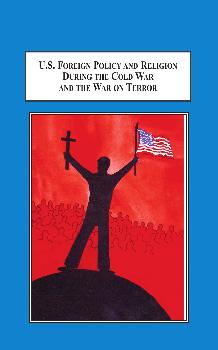U. S. Foreign Policy and Religion During the Cold War and the War on Terror
We are currently unable to ship to the EU countries at this time. We apologize for this inconvenience.

| Author: | Stramer, Janicke | |
| Year: | 2012 | |
| Pages: | 172 | |
| ISBN: | 0-7734-1607-2 978-0-7734-1607-9 | |
| Price: | $159.95 + shipping | |
| (Click the PayPal button to buy) | ||
Janicke Stramer’s book examines the use of religious rhetoric and faith as a tool to garner support for U.S. foreign policy. Stramer’s history provides case studies of the Truman administration and the George W. Bush (43) administration. In particular, Stramer examines Truman’s use of religion to develop his containment policy against “godless” communism during the Cold War and uses it as a backdrop for an analysis of how religion was applied to the Bush administration’s “War on Terror.” Using these two studies, Stramer asserts that a framework can be developed to analyze the U.S. perception of itself as a Christian democracy and how this perception has been applied to U.S. foreign policy since World War II.
Table of Contents
Chapter 1 Introduction
1.1 Introduction
1.2 Research Design and Methodology
1.3 Theoretical Background
1.4 Literature on Truman and the Cold War
1.5 Literature on the Bush and “War on Terror.”
1.6 Organization of Chapters
Chapter 2 The Truman Presidency: 1945 – 1953
2.1 Introduction
2.2 Religious Uprising During the Early Cold War
2.3. Truman’s Religious Rhetoric
2.4 Uniting the Religious Communities
2.5 Containment and the NSC-68
2.6 Conclusion
Chapter 3 The Bush Presidency: 2001 – 2005
3.1 Introduction
3.2 Public Support for Bush
3.3 The Missing Link between Saddam Hussein and Osama Bin Laden
3.4 Bush’s Religious Rhetoric
3.5 Bush’s Faith Alliance
3.6 Conclusion
Chapter 4. Conclusion
Bibliography
List of Annexes
Annex A - A chart of the frequency of religious rhetoric in Truman’s speeches:
Annex B - A chart of the frequency of religious rhetoric in Bush’s speeches:
ANNEX C. - Documents on the Discussion of NSC-68 in early 1950
1.1 Introduction
1.2 Research Design and Methodology
1.3 Theoretical Background
1.4 Literature on Truman and the Cold War
1.5 Literature on the Bush and “War on Terror.”
1.6 Organization of Chapters
Chapter 2 The Truman Presidency: 1945 – 1953
2.1 Introduction
2.2 Religious Uprising During the Early Cold War
2.3. Truman’s Religious Rhetoric
2.4 Uniting the Religious Communities
2.5 Containment and the NSC-68
2.6 Conclusion
Chapter 3 The Bush Presidency: 2001 – 2005
3.1 Introduction
3.2 Public Support for Bush
3.3 The Missing Link between Saddam Hussein and Osama Bin Laden
3.4 Bush’s Religious Rhetoric
3.5 Bush’s Faith Alliance
3.6 Conclusion
Chapter 4. Conclusion
Bibliography
List of Annexes
Annex A - A chart of the frequency of religious rhetoric in Truman’s speeches:
Annex B - A chart of the frequency of religious rhetoric in Bush’s speeches:
ANNEX C. - Documents on the Discussion of NSC-68 in early 1950
Other Cold War Books
2003 - Controlling Information in U.S. Occupied Germany, 1945-1949: Media Manipulation and Propaganda
>> See all our Cold War books